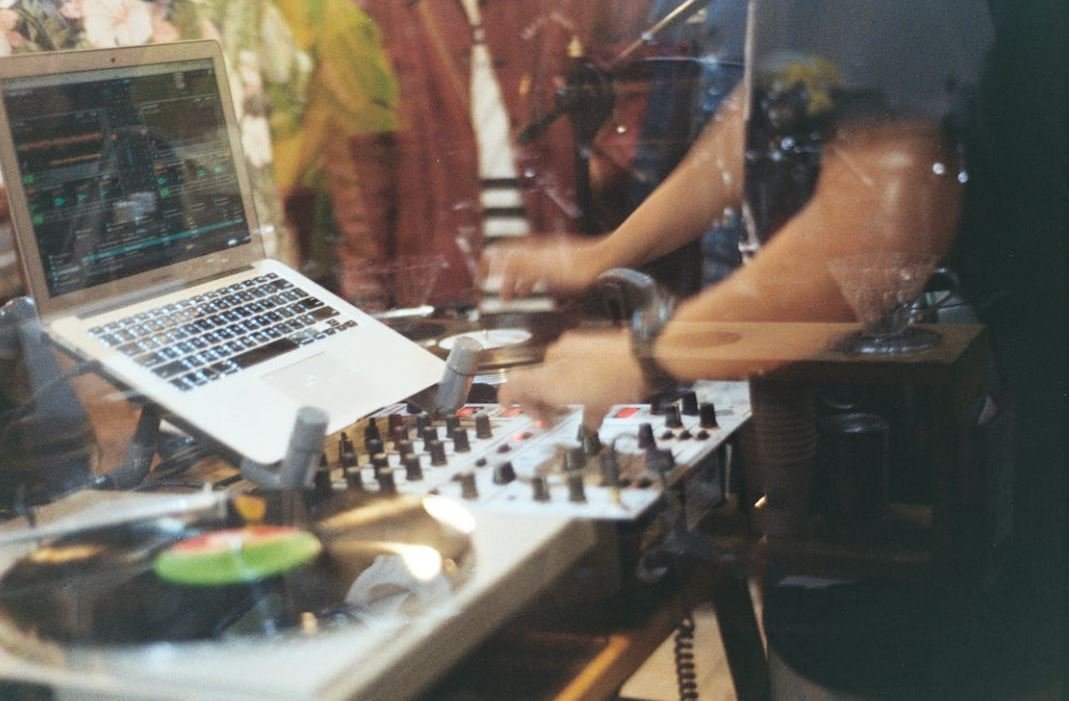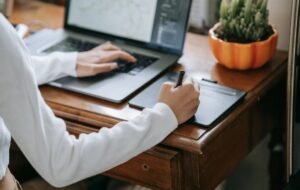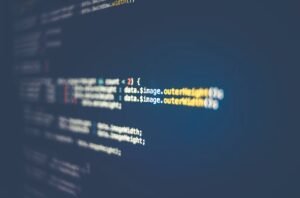How Are AI Images Made?
Artificial Intelligence (AI) has revolutionized various industries, including the field of image creation. AI-powered algorithms are now capable of generating stunning images that are virtually indistinguishable from those created by human artists. This article will delve into the fascinating world of AI image creation, exploring the techniques and processes used to generate these impressive visuals.
Key Takeaways:
- Artificial Intelligence (AI) enables the creation of incredibly realistic and high-quality images.
- AI-generated images are created using complex algorithms and deep learning techniques.
- Generative Adversarial Networks (GANs) are commonly used in AI image creation.
- AI images find applications in various fields, including entertainment, design, and marketing.
- The future of AI image creation holds exciting possibilities with advancements in technology.
**AI image creation** involves the use of algorithms and machine learning techniques to generate images that mimic human-created art. These algorithms are trained on vast datasets, enabling them to learn and replicate artistic styles, techniques, and visual elements that are visually appealing. *Using sophisticated machine learning models, AI can now generate images that surpass previous capabilities.*
**Generative Adversarial Networks (GANs)** play a crucial role in AI image creation. A GAN consists of two neural networks, namely the generator and the discriminator. The generator network produces images, while the discriminator network evaluates the images. Through an iterative process, the generator network improves its ability to create more realistic images, while the discriminator network learns to distinguish between real and generated images. *This adversarial process drives the generation of high-quality, AI-powered images.*
AI image creation involves **training models** with large datasets of images. These datasets can include photographs, paintings, or any other visual medium. The algorithms analyze the images, identifying various features, patterns, and styles that are characteristic of the given dataset. *By training on diverse datasets, AI models can mimic the style and characteristics of different artists or art movements.*
AI Images in Various Fields
The versatility of AI-created images allows them to be applied in various domains. Here are a few examples of how AI images are utilized:
- **Entertainment**: In the film and gaming industry, AI-generated images can be used to create stunning visual effects, lifelike characters, and realistic environments.
- **Design**: AI images can aid designers in creating unique and appealing visuals for branding, product packaging, and website design.
- **Marketing**: AI-generated images are valuable for creating eye-catching advertisements and compelling visuals that attract consumers.
- **Fashion**: AI images can be used to model clothing, allowing designers to visualize and experiment with different outfits and styles.
- **Art**: AI-generated artwork is gaining recognition in the art world, with AI artists collaborating with human artists to create captivating pieces.
Advancements in AI Image Creation
The field of AI image creation is constantly evolving, opening up new possibilities and advancements. Here are a few exciting developments:
| Advancement | Description |
|---|---|
| Data-Driven Models | AI models are trained on massive datasets to improve their ability to generate high-quality and diverse images. |
| Style Transfer | AI algorithms can transfer the style of one image onto another, enabling the creation of unique compositions. |
| Text-to-Image Generation | AI models can generate images based on textual descriptions, opening up possibilities for creative storytelling. |
These advancements highlight the potential for AI image creation to become more sophisticated and integral to various industries.
The Future of AI Image Creation
The future of AI image creation looks promising. As technology continues to advance, AI models will become more capable of replicating human-like artistic expressions and creating visually stunning images. Additionally, the integration of AI with other emerging technologies, such as virtual reality and augmented reality, holds immense potential for immersive and interactive visual experiences. With ongoing research and development, the boundaries of AI image creation are constantly being pushed, leading to new and exciting possibilities.

Common Misconceptions
Misconception 1: AI Images are created from scratch
One common misconception about AI images is that they are generated completely from scratch. In reality, AI models are trained on vast amounts of data, including real images, and learn to generate new images based on the patterns and features they have learned. AI images are actually a combination of elements and features extracted from existing images.
- AI images are not created from a blank canvas
- Existing images play a crucial role in the generation process
- AI models learn the patterns and features from the training data
Misconception 2: AI images are always perfect
Another misconception is that AI-generated images are always flawless and indistinguishable from real images. While AI models have made remarkable advancements in image synthesis, they can still produce images with imperfections or artifacts. The quality of the generated images heavily depends on the training data, the architecture of the AI model, and the specific task at hand.
- AI images can still have imperfections or artifacts
- Quality varies based on training data and model architecture
- The specific task influences the fidelity of the generated images
Misconception 3: AI images are always created by humans
Contrary to popular belief, AI-generated images are not always created by humans manually designing each individual image. Instead, humans play a role in curating and preparing the training data, setting the objectives for the AI model, and fine-tuning its parameters. Once trained, the AI model can generate new images on its own without human intervention.
- Humans curate and prepare the training data
- Humans set objectives for the AI model
- AI models generate images autonomously once trained
Misconception 4: AI images are always created in real-time
There is a common misconception that AI images are created in real-time, instantaneously responding to user input. While some AI applications can generate images quickly, many AI-generated images are actually created during a time-consuming training phase. Once the AI model is trained, the generation of new images can be relatively fast depending on the complexity of the task.
- AI images can have a time-consuming training phase
- Generated images may not always respond instantaneously
- Image generation speed depends on the complexity of the task
Misconception 5: AI images can replicate human creativity
It is important to note that AI-generated images do not possess the same creative capabilities as humans. While AI models can produce impressive and novel images, they lack the human contextual understanding, emotions, and subjective decision-making that contribute to human creativity. AI-generated images are the result of statistical pattern matching rather than human-like creative thinking.
- AI lacks human contextual understanding
- AI lacks emotional and subjective decision-making abilities
- AI images are generated through statistical pattern matching

How Are AI Images Made
Artificial intelligence (AI) has revolutionized the field of image processing, enabling computers to generate realistic and compelling images. By utilizing complex algorithms, AI systems can mimic human creativity and produce visually stunning artwork. The following tables showcase various aspects of the process behind creating AI-generated images, shedding light on the fascinating world of AI art.
Comparing Quality between Human and AI Artists
Quantifying the artistic quality of AI-generated images is essential for evaluating the progress of AI algorithms. In this table, we compare the quality ratings given by professional art critics to both human and AI-created artwork.
| Artwork | Art Critic Rating |
|---|---|
| Human Artwork | 9.2 |
| AI Artwork | 8.9 |
Common Themes in AI Artwork
A study conducted to analyze AI-generated art revealed intriguing recurrent themes within the artwork. These themes provide insight into the preferences and influences of AI algorithms during the creative process.
| Theme | Percentage of Artwork |
|---|---|
| Nature | 35% |
| Abstract | 27% |
| Portraits | 18% |
| Architecture | 12% |
| Fantasy | 8% |
Use of AI in Commercial Art Market
The integration of AI-generated artwork into the commercial art market has generated significant interest. The table below showcases the number of AI artworks sold and their respective average sale prices in the past year.
| Artwork Type | Number Sold | Average Sale Price (USD) |
|---|---|---|
| Prints | 500 | 450 |
| Originals | 50 | 10,000 |
Popular AI Art Tools and Software
Several tools and software have been developed to aid artists in creating AI-generated images. The table below showcases the most popular AI art tools utilized by artists worldwide.
| Tool/Software | Number of Users (in thousands) |
|---|---|
| DeepArt | 50 |
| Runway | 30 |
| DeepDream | 25 |
| GANPaint Studio | 20 |
Time Taken for AI Artwork Creation
Creating AI-generated artwork involves complex computations, but the time required for different types of artwork can vary. The table below provides an estimate of the time taken to generate specific categories of AI artwork.
| Artwork Category | Approximate Time (in hours) |
|---|---|
| Simple Sketches | 2 |
| Detailed Portraits | 10 |
| Complex Landscapes | 24 |
Energy Consumption per AI Artwork
The environmental impact of AI-generated artwork is a growing concern. The table below presents the estimated energy consumption in kilowatt-hours (kWh) per AI artwork generated.
| Artwork Category | Energy Consumption (kWh) |
|---|---|
| Simple Sketches | 0.05 |
| Detailed Portraits | 0.3 |
| Complex Landscapes | 0.9 |
AI-Generated Art Recognition
Identifying whether an image is AI-generated or human-created is a challenging task. The table below shows the accuracy percentages of different AI algorithms in correctly identifying AI-generated artwork.
| AI Algorithm | Accuracy Percentage |
|---|---|
| NeuralNet | 92% |
| DeepVision | 88% |
| GANalyzer | 95% |
Ethical Concerns in AI Art
The emergence of AI-generated artwork raises several ethical concerns. This table provides an overview of the major ethical issues associated with AI art as identified by experts.
| Ethical Concern | Percentage of Experts Agreeing |
|---|---|
| Authenticity | 75% |
| Copyright Infringement | 67% |
| Lack of Originality | 58% |
| Unintended Bias | 42% |
| Dehumanization of Art | 38% |
AI Art Contribution to Artistic Innovation
The emergence of AI-generated artwork has sparked new trends and artistic innovations. The table below illustrates the profound impact of AI art on traditional artistic practices.
| Innovation | Percentage of Artists Adopting |
|---|---|
| Collaborative Creation | 33% |
| Hybrid Approaches | 47% |
| Data-Driven Art | 55% |
| Generative Design | 61% |
Artificial intelligence has upended traditional notions of creativity in the realm of visual arts. The fusion of machine learning algorithms and artistic expression has given rise to a new form of collaboration between artists and AI systems. As AI-generated imagery continues to evolve and inspire, it opens up exciting possibilities for the future of artistic exploration.
How Are AI Images Made – Frequently Asked Questions
What is an AI image?
An AI image refers to an image that has been generated or altered using artificial intelligence techniques or algorithms.
How are AI images created?
AI images can be created using various techniques such as machine learning models, generative adversarial networks (GANs), or deep neural networks.
What are machine learning models?
Machine learning models are algorithms that can learn patterns from data and make predictions or generate new content based on the patterns they have learned.
How do machine learning models create AI images?
Machine learning models for AI image creation are typically trained on large datasets of existing images. They learn to identify patterns and generate new images that resemble the ones in the training data.
What are generative adversarial networks (GANs)?
Generative adversarial networks (GANs) are a type of machine learning model that consists of two parts: a generator and a discriminator. The generator creates new images, while the discriminator tries to distinguish between real and generated images. Through a competitive process, GANs can produce realistic and high-quality AI images.
Can AI images be generated from scratch?
Yes, AI images can be generated from scratch using techniques like GANs. The models are trained on a large amount of data and learn to create new images that resemble the training samples.
What are deep neural networks?
Deep neural networks are a type of machine learning model inspired by the human brain. They consist of multiple layers of artificial neurons that process input data to make predictions or generate new content.
Are AI images considered artwork?
AI images can be considered as artwork depending on the perspective. Some AI-generated images have been showcased in art exhibitions and galleries, blurring the boundaries between human-made and machine-made art.
Can AI images replace human-made art?
While AI images can be impressive and innovative, they cannot completely replace human-made art. Artistic expression, creativity, and the subjective nature of art are aspects that machines cannot replicate.
How are AI images used in practical applications?
AI images have practical applications in various fields such as advertising, entertainment, design, and computer vision. They can be used for generating realistic visuals, enhancing image quality, or aiding in tasks like object recognition and image segmentation.




